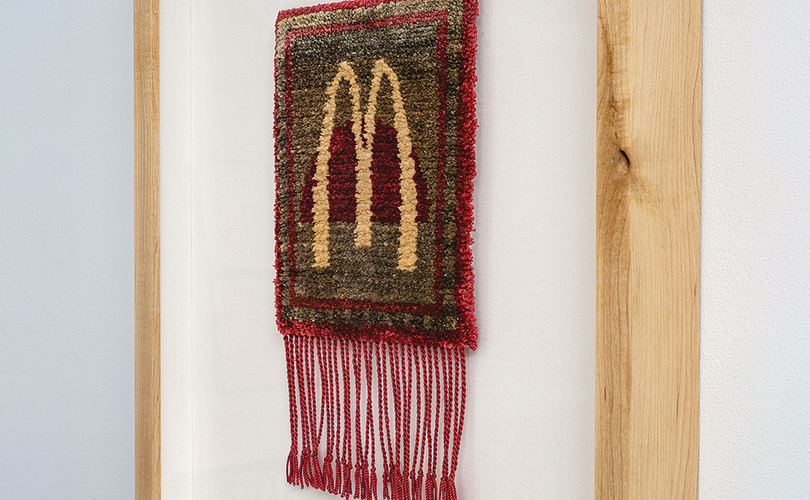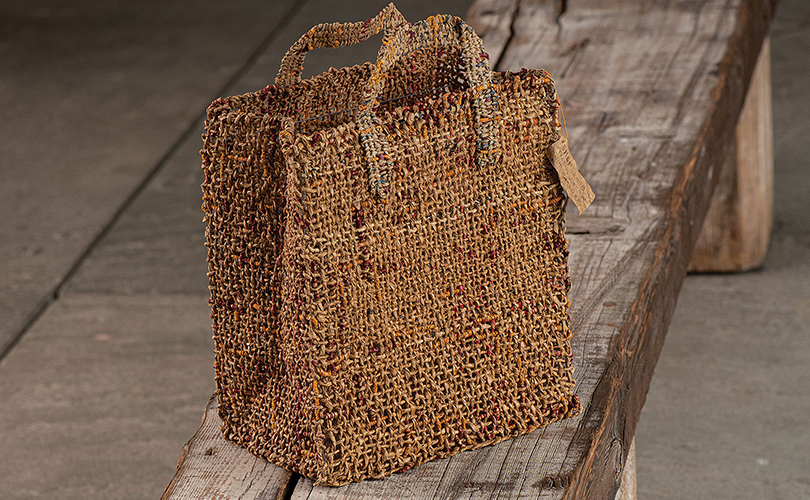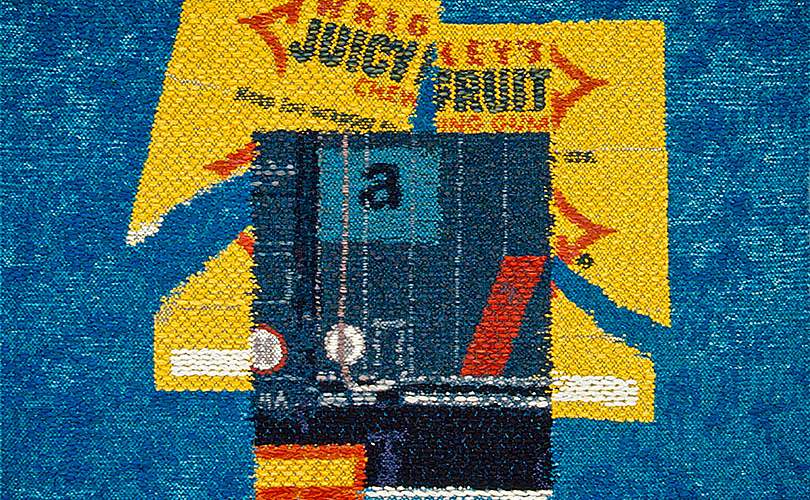Pop culture is a potent inspiration for artists, from Andy Warhol’s portraits of Liz Taylor Marilyn Monroe and Superman. Mickey Mouse and Donald Duck for Roy Lichtenstein (On a Dare from His Son, Roy Lichtenstein Unwittingly Invented Pop Art, Alina Cohen, Artsy, October 1, 2018) and Pinocchio and Mao Tse-tung for Jim Dine.

Artists whose work is shown by browngrotta arts are not immune to the attractions of these images. Ed Rossbach, is one such artist — he created a printed textile based on images from Sports Illustrated — highlighting advertisements in particular. Other works featured John Travolta and US astronauts. Rossbach is best known for including Mickey Mouse in many examples of his work — woven in damask, painted on cedar baskets, illustrated in lace, featured in embroidered photographs. Rossbach’s The New Mickey basket features images of Mickey throughout. He reportedly co-opted the world’s famous rodent in response to snide remarks about his classes and occupation. The motif came to be included in some of his best-known works — including works in the Boston Museum of Fine Arts and the Cleveland Art Museum.

“If you’re doing knotless netting, you need an image, or I want an image,” Rossbach explained in an oral history prepared by Harriet Nathan in 1983. “What image do you put in nowadays? Sometimes the images were there for you, certain religious images, and now in our culture, what images do you put in? So you put in Mickey Mouse, and it’s a statement about that, too, I think. I like Mickey Mouse. I think it’s partly because it’s a defensive attitude on my part, that what people think very much is Mickey Mouse. They refer to the classes that you teach as Mickey Mouse classes, and everything is just dismissed as, ‘It’s Mickey Mouse.'” Rossbach found that very damaging. “So I put a Mickey Mouse on baskets and the most elaborate textile; I wove Mickey Mouse in double damask,” he said laughing. “I did him in ikats. I’ve done a lot of Mickey Mouses. And Mickey Mouses sell,” he added wryly.

In our recent work with the estate of Glen Kaufman, we discovered pop culture themes interested him as well. In 1983, he created a series works that took the form of diminutive prayer rugs with McDonald’s arches replacing the traditional mihrabs — arch-shaped designs that indicate the direction of Mecca.

James Bassler’s interest was in Trader Joe’s market — literally. He created a bag from their bags. He wanted to introduce his class to the technology of spinning. What materials do we have readily available, he asked. “I spotted a Trader Joe bag on a table, in which I had carried supplies to class,” he says. “At that point, much to my surprise, I had established my lesson plan for the day. I told them that their first assignment was to cut and spin yam from a T.J. bag. I then demonstrated what it takes to do this … I proceeded to weave, using the resulting brown paper ‘yarn.’ As I wove, my concept crystallized to create a Trader Joe Bag. It took approximately eight bags, a lot of spinning and 2-3 intermittent years to complete.”

Popular products often serve as graphic inspiration. Andy Warhol’s Campbell’s Tomato Soup can prints and Brillo boxes are prime examples. For a commission, Helena Hernmack created a collage that incorporated a Juicy Fruit label, then wove the imagery into a tapestry.
For more information about our artists, visit browngrotta.com.
